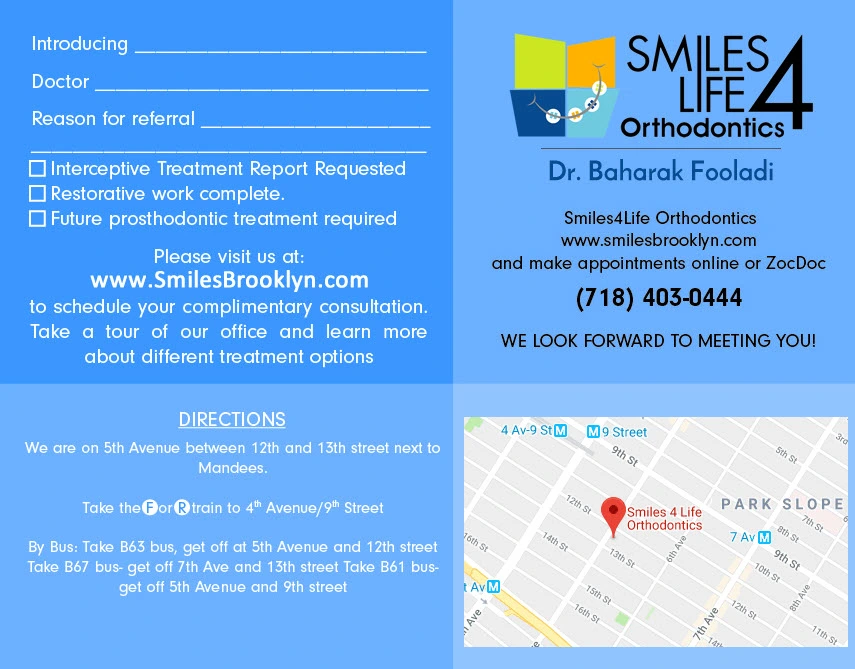Maintaining good oral hygiene is an important part of your orthodontic treatment. Your braces, bands, wires, and retainers can trap food debris and make it tricky to remove plaque with brushing and flossing. Practicing careful dental hygiene after eating is the best way to avoid plaque accumulation, tooth decay, and gum disease. Follow these oral hygiene tips for braces patients, and consult Dr. Fooladi at Smiles 4 Life Orthodontics in Park Slope if you have more questions.
Brushing:
Strive to brush your teeth four times each day to get rid of food particles that can build up in your teeth and braces. Aim to brush after breakfast, after lunch or right after school, after dinner, and at bedtime.
Flossing:
Even though it can be time-consuming with braces, it’s important to floss your teeth daily. The ideal time is before going to bed so that your teeth are clean for the night. A reusable floss threader can be very helpful in getting the floss under your wires. Pull a small amount of floss through the threader before sliding it up and down along the front of every tooth. Floss gently around your archwire to avoid damaging it.
Mouth rinse:
A hydrogen peroxide antiseptic mouth rinse can minimize gum or cheek inflammation, avoid infection, and reduce irritation caused by braces. Place two teaspoons of the rinse in your mouth and swish it around for one minute before spitting it out. This can be done up to four times a day after brushing. Similar to the way peroxide can help heal a scrape on your skin, the rinse promotes healing inside your mouth. General irritation from braces, canker sores, cheek bites, or other minor gum issues can be improved by using this rinse.
Interdental toothbrush:
An interdental toothbrush means that it goes between the teeth. It is good for cleaning under and around your braces and archwires. Use an interdental toothbrush gently to avoid wire damage.
Topical fluoride:
Using a sodium fluoride gel is a good way to prevent tooth decay during orthodontic treatment. It eliminates bacteria and replaces minerals in tooth enamel that have been harmed by acids. Topical fluoride is not a replacement for brushing or flossing, but should be applied at bedtime after other dental hygiene tasks. Apply a small strip of gel onto your toothbrush and then brush for one minute before spitting it out. Avoid eating or drinking for 30 minutes after fluoride application, allowing the active ingredient to remain on your teeth.
Removable appliance:
Part of your routine should be brushing your removable appliance every day. Just like your teeth, the appliance can accumulate plaque buildup. Soak your appliance daily in a denture cleaning tablet that has been dissolved in room temperature tap water.







